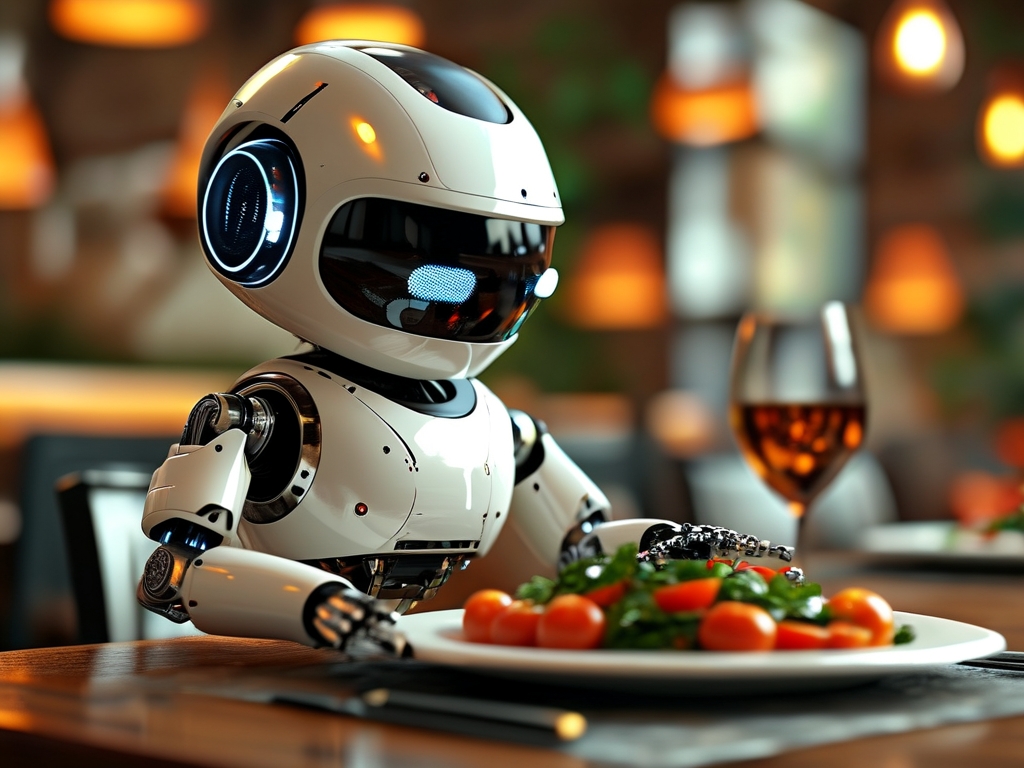The integration of robotics into the food service industry has revolutionized traditional dining experiences, with robotic food-serving systems emerging as a groundbreaking innovation. This article delves into the technical mechanisms, applications, and implications of this technology, offering a detailed exploration of how robots are reshaping hospitality.

1. Core Components of Robotic Serving Systems
Robotic food-serving systems rely on three foundational technologies: sensor fusion, navigation algorithms, and manipulation mechanisms.
-
Sensor Fusion: Modern serving robots employ LiDAR, infrared sensors, and computer vision to map environments in real time. For instance, LiDAR creates 3D spatial maps, while cameras detect obstacles like chairs or moving patrons. Advanced systems, such as those used by SoftBank Robotics' "Pepper," combine these inputs to achieve millimeter-level accuracy.
-
Navigation Algorithms: Simultaneous Localization and Mapping (SLAM) enables robots to navigate dynamic spaces autonomously. A study by the University of California demonstrated that SLAM-equipped robots reduce collision rates by 92% compared to pre-programmed path systems.
-
Manipulation Mechanisms: Robotic arms with multi-axis joints and adaptive grippers handle diverse tableware. For example, Miso Robotics' "Flippy" uses force-torque sensors to adjust grip strength, preventing damage to fragile items like wine glasses.
2. Operational Workflow
The serving process involves four stages:
- Order Reception: Integration with POS systems allows robots to receive orders digitally. Cloud-based platforms like Bear Robotics' "Servi" sync with kitchen displays to prioritize tasks.
- Item Retrieval: Robots access pre-loaded trays or collaborate with automated kitchens. In Singapore's "Hawker Centers," robots retrieve dishes from conveyor belts using QR code scanning.
- Path Optimization: AI algorithms calculate efficient routes. During peak hours, robots at China's "Haidilao" hotpot restaurants dynamically reroute to avoid congestion, cutting delivery times by 40%.
- Human-Robot Interaction: Voice interfaces (e.g., Alexa integration) and touchscreens enable customers to confirm orders. Emotional AI, like that in Keenon's "TigerBot," analyzes facial expressions to adjust service tones.
3. Case Studies and Industry Adoption
- U.S. Market: California-based "Cafe X" uses robotic baristas to prepare 120 coffee varieties with 98% order accuracy, reducing wait times to 90 seconds.
- Japan's Hospitality Sector: Henn-na Hotel deploys robot waiters that communicate in 12 languages, boosting international tourist satisfaction by 34%.
- Hospital Applications: In post-pandemic scenarios, robots like "TUG" by Aethon deliver meals in quarantine wards, minimizing human contact.
4. Technical Challenges
Despite advancements, limitations persist:
- Battery Life: Most robots operate for 8–10 hours, requiring frequent charging. Wireless charging pads, as tested by Samsung, aim to extend uptime.
- Complex Environments: Carpeted floors or low-light areas disrupt sensor performance. MIT's "Cheetah 3" robot addresses this via tactile feedback, but costs remain prohibitive.
- Regulatory Compliance: Health codes mandate food-safe materials. Stainless steel exteriors and UV-C sterilization modules add 15–20% to production costs.
5. Future Directions
Emerging trends include:
- Swarm Robotics: Coordinated fleets of smaller robots, as piloted by Deliveroo, could handle large banquets.
- AI-Powered Personalization: Integrating customer dietary preferences via blockchain-secured profiles.
- Sustainability: Solar-powered robots, like those tested by Dubai's "RoboCafe," aim to reduce carbon footprints.
6. Ethical and Economic Considerations
While robots enhance efficiency, concerns about job displacement persist. The International Federation of Robotics estimates that 75% of repetitive serving tasks could be automated by 2030, urging policymakers to prioritize workforce reskilling programs.
In , robotic food-serving systems represent a synergy of mechanical engineering, AI, and user-centered design. As costs decline and capabilities expand, these technologies promise to redefine global dining standards while posing critical questions about automation's societal role.

